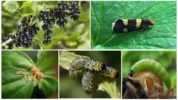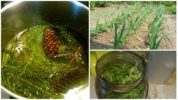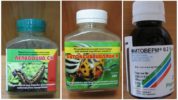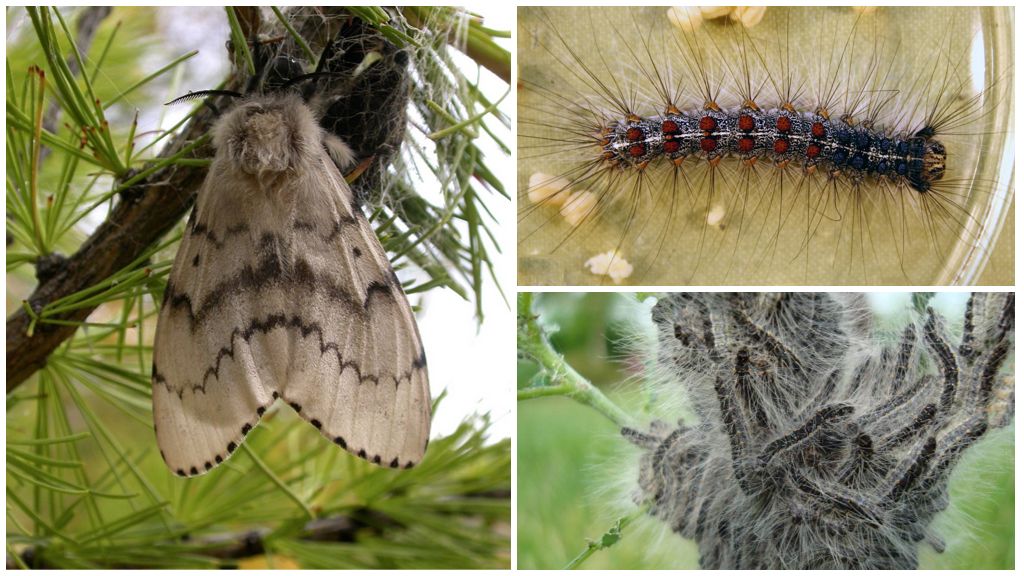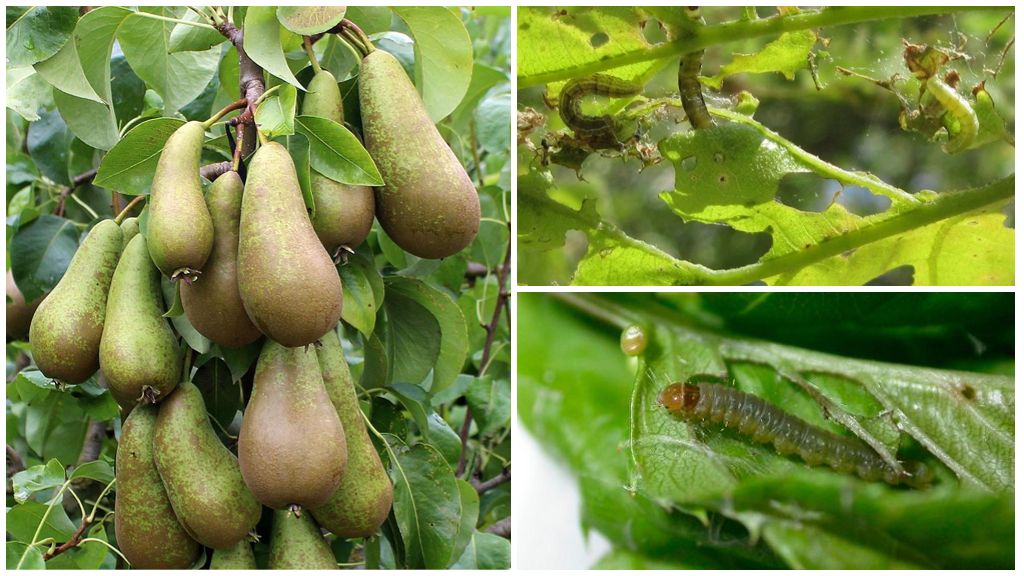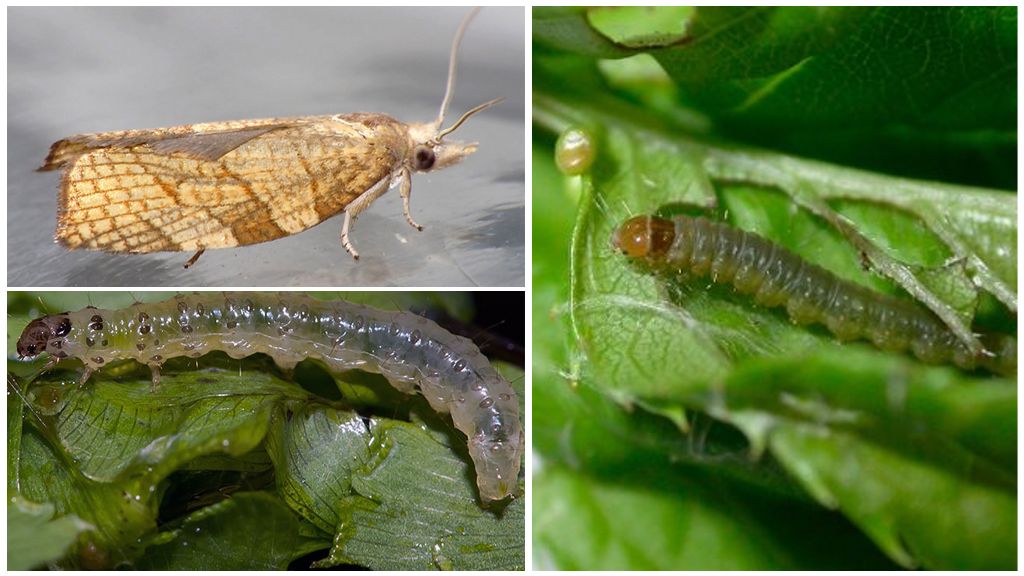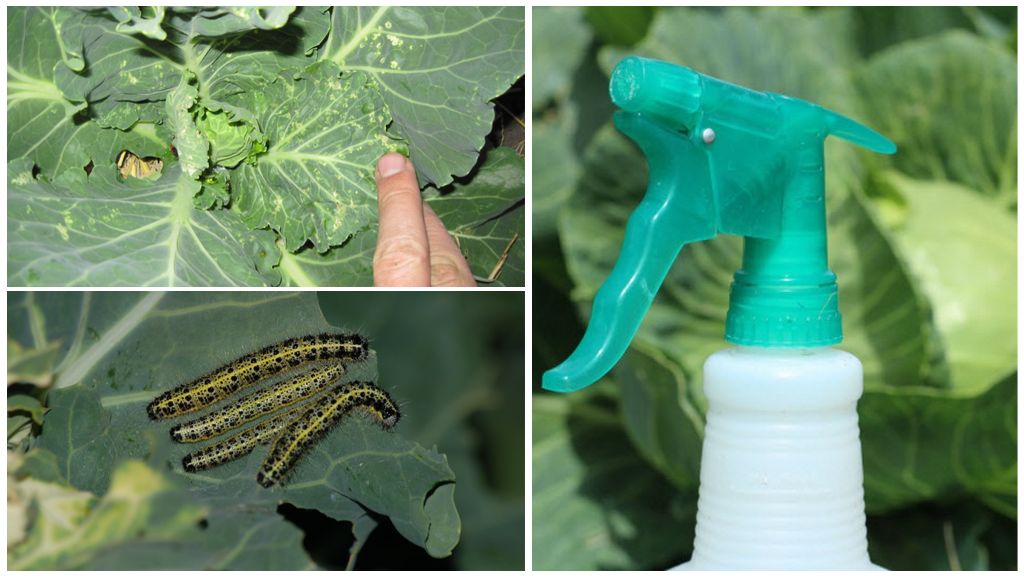- Currant Pests
- Fighting caterpillars in folk ways
- Biological agents against caterpillars
Red and black currants are the most beloved berries and popular shrubs among gardeners in Russia. Due to the widespread distribution of this culture, the number of pests on it is also large. Information on how to deal with currant caterpillars by folk and chemical means will help prevent tangible damage to the future crop and get rid of the tracks.
Types of Caterpillars and Damage
Currants are very fond of eating various harmful insects and their larvae, which are a transitional form between butterflies and pupae. Most caterpillars on the currant emerge from the eggs laid by the females. For further growth, they need nutrition in the form of green mass of plants, which they intensively absorb.
On a note!
You should know that the appearance of "harmless" and pretty butterflies of different species near the bushes means that they flew in to create egg-laying. Destroying them is much easier than then fighting the caterpillars that emerged from them in huge numbers.
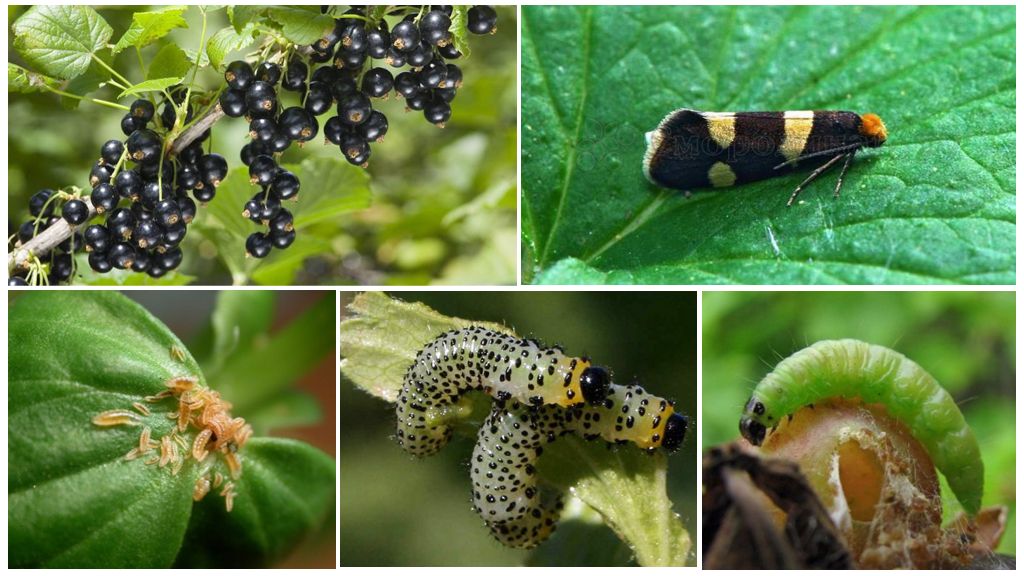
Therefore, gardeners need to know what types of butterflies and their larvae damage currant bushes:
- Currant kidney moth has a small size up to 16 mm in the wingspan with fringe, painted in yellow-brown and gray-brown tones. She makes egg laying inside young buds and ovaries, which then begin to dry quickly. Its caterpillars winter under the bark, and in the spring they climb up the branches and eat the buds from the inside. As they grow, they change color from red to green. Before flowering bushes, the larvae burrow into the ground and pupate, so that later they appear as moths. To combat caterpillars on currants, spraying bushes with Karbofos is used.
- Gooseberry moth - a gray butterfly that begins to fly during flowering bushes gooseberry and currants and lays eggs inside the flowers. Sometimes found on raspberries. Small caterpillars emerging from them eat currants: they produce a cobweb, which envelops the berries and nibbles them. Damaged fruits quickly redden and dry out. Pupae winter in the upper layers of soil near the bushes. To destroy them, it is necessary in the autumn to do the hilling of currants to a height of 15 cm, and to plant the plants themselves with insecticides twice: before and after flowering.
- Gall midges belong to mosquito-like insects, the larvae of which eat various plant tissues, forming galls in the form of swelling of the bark on branches and other parts of the bush. Prefer blackcurrant planting. Caterpillars appear first in white, as they grow they turn red and become bright red. Overwinter in the stage of larvae in the surface layers of the earth.
- The gooseberry sawfly is a small black or yellow beetle, its green caterpillars on red currants eat leaves so that only veins leave them. With a large number of larvae, the bush may remain without leaves at all. Then the pests are buried in the soil and pupate. After the departure of adults, eggs are re-laid on leaves; over the summer, the number of generations reaches 3. To destroy beetles and their larvae, it is recommended to spray with bio- and chemical preparations before and after flowering.
- Leafworm - its adult individuals are light brown butterflies with wave-like stripes on their wings. They lay eggs on leaves. The appeared green or brown caterpillars with a black head actively nibble young shoots. Then, using the generated web, they are wrapped in a tube along with the leaf, where they live inside, eating vegetable juices. To destroy currant leafworms it is recommended to manually cut off all the straws along with the pests and burn them; it is recommended to treat the bushes with an insecticide before flowering.
- Gooseberry moth looks like a large butterfly up to 5 cm in size with bright yellow wings. Almost all garden crops, including fruit trees (apple treespears). Oviposition does in June on the inner sides of the leaves. Gluttonous caterpillars on currants completely eat leaves along with veins, preferring red and white varieties. They are painted in gray, and yellow stripes go along the sides. The first appearance of caterpillars occurs in early spring, they are preferred to eat the very first young leaves. At the end of summer, they make their own nests from cobwebs, hiding in the fallen leaves of trees. The treatment of bushes by Karbofos from the moth should be done in 2 calls: in April - during the caterpillar exit period, and from June to July, when the butterflies begin to fly.
- Glass-currant - its caterpillars settle inside the shoots of the bush, eating their core. Such a pest is difficult to eliminate due to the fact that chemicals do not act on it. The glass-butterfly butterfly looks like a wasp, it has narrow wings and orange stripes. The insect makes oviposition from the second half of May until mid-June right in the cracks of the plant bark or near the kidneys. After 2 weeks, the first caterpillars appear, which climb into the shoots, eating them from the inside and gradually moving down to the roots. Affected bushes begin to dry out.
On a note!
Get rid of caterpillars on currants. it is possible only by cutting damaged branches and burning them. Partially save the bushes during pupation of the glass-house (May-June), when pests leave the stems and burrow into the soil. It is necessary to do deep cultivation with the addition of wood ash and tobacco dust, some advise to sprinkle the soil with a mixture of dry mustard, ash and black pepper, at the rate of 3 tbsp for each bush.
Folk methods of fighting caterpillars
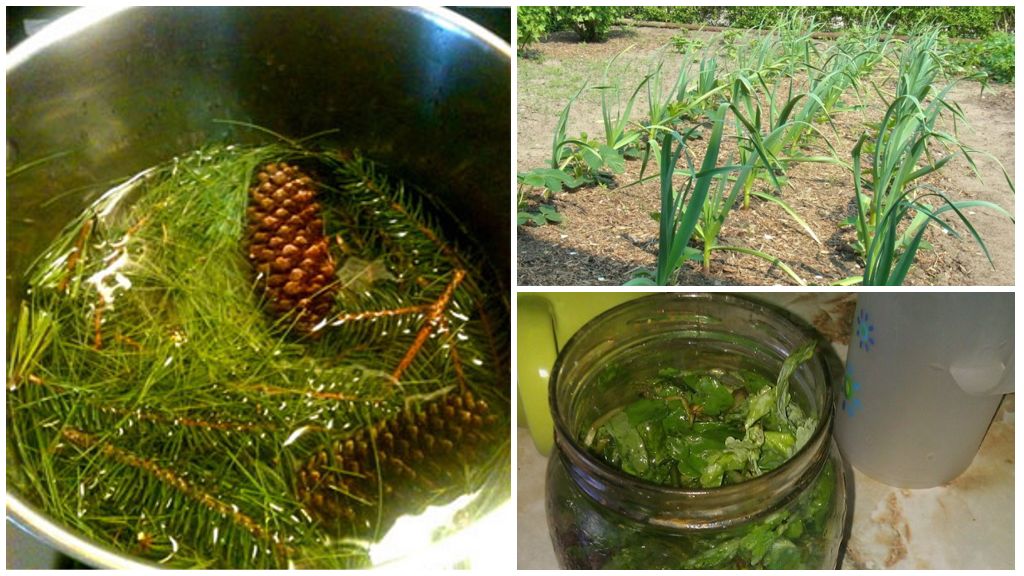
Each gardener should carefully inspect their plantings in order to timely detect damage to the leaves, drying out of branches or the appearance of twisted tubules. If you suspect the occurrence of pests and with a small number of them, it is recommended to fight with caterpillars on currant folk remedies:
- plant garlic, chamomile, marigolds, wormwood or yarrow around the currant bushes, the smell of which will scare away the pests;
- in early summer, when loosening the soil, add tobacco dust powder to the soil;
- prepare a decoction of celandine (similarly use yarrow and tansy), which will help to destroy the caterpillars, and spray the bushes 1-2 times a week;
- make spraying the bushes with garlic infusion, which is prepared from 150 g of chopped cloves, filled with 1 liter of cold water, it should be kept for 5 days in a dark place, and diluted with 10 ml of infusion per 1 liter of water before use;
- to process the spruce infusion, for which you need 1 tbsp. pine and spruce needles and insist 7 days, before spraying, the solution must be diluted in a proportion of 1:10;
- to process the bushes in the first half of June with soapy water: 30-40 g of hozmyl in 1 liter of water;
- make spraying with infusion from the tops of tomatoes or potatoes: 1 kg of leaves per bucket of boiling water, cook for 0.5 hours, add 40-50 g of soap;
- grind 100 g of pods of hot pepper, add 1 liter of water and boil for 1 hour, leave for 2-3 days, dilute the concentrated solution at the rate of 100 g per 10 liters of liquid before processing and add soap;
- similarly, an infusion is prepared from 50-60 g of mustard powder per 2 liters of water, then it is insisted for 3 days, another 3 liters are added and spraying is carried out.
On a note!
The same folk remedies are also suitable for cabbage and other vegetable crops.
Biological and chemical control agents
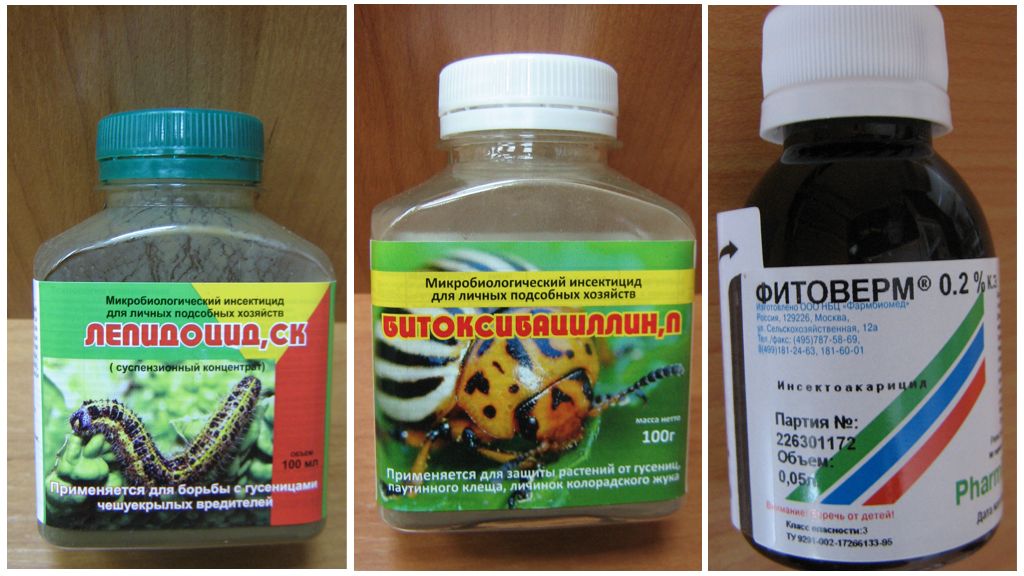
To quickly and effectively destroy the hordes of caterpillars that occupied the bushes, experts advise using insecticides. The choice of how to process currants from caterpillars depends on the season and the condition of the bushes.
Many gardeners prefer biological products whose active substances do not penetrate the fruits and are not harmful to the crop. Spraying with such means can be carried out no less than 3 weeks before the start of berry picking. The period before flowering or after it is selected.
The most popular biological remedies for caterpillars on currants: Bitoxibacillin, Lepidocide, Fitoverm, Endobacterin, Nembact, etc.
On a note!
The high effectiveness of bioinsecticides is based on the reproduction and destructive action of pathogenic fungi and viruses that infect the body of pests.
Of the chemical insecticides against such pests are used:
- Karbofos 10% is used after swelling and opening of the buds on the bush, but not more than 2 times during the summer, to destroy the kidney moth;
- Iskra-Bio, Fufanon, Karbofosom means (0.3%) are sprayed in the period before flowering and after - against the ognevka and sawfly;
- Karbofos 0.3% is used in April during the period of active growth of the kidneys and the first appearance of caterpillars, in June - after the departure of butterflies, which helps to get rid of gooseberry moth;
- Spark or Fitoverm - currants are sprayed with the appearance of young foliage, which helps against the appearance of caterpillars of the glass-house;
- Carbophos 10% is processing the bushes at the end of the harvest to destroy the glass in the currant;
- insecticidal and biological products against leafworms: Airborne, Tod, Atom, Lepitocide (before flowering); Aivengo, Accord, Fatrin, Lepitocide (at the end of flowering).
Important!
At the end of each season, after picking berries, currant bushes are carefully inspected, sanitary pruned, and dry and damaged branches and leaves are removed, which are then burned.
To prevent the emergence of spring caterpillars from under the soil, they dig it well in the autumn to dig up wintering larvae to freeze them, then mulch them with a layer of up to 15 cm - this will become an obstacle for insects to exit from the ground. Such measures will help get rid of a certain part of the pests and reduce the number of caterpillars that prefer currant bushes for their lives.
